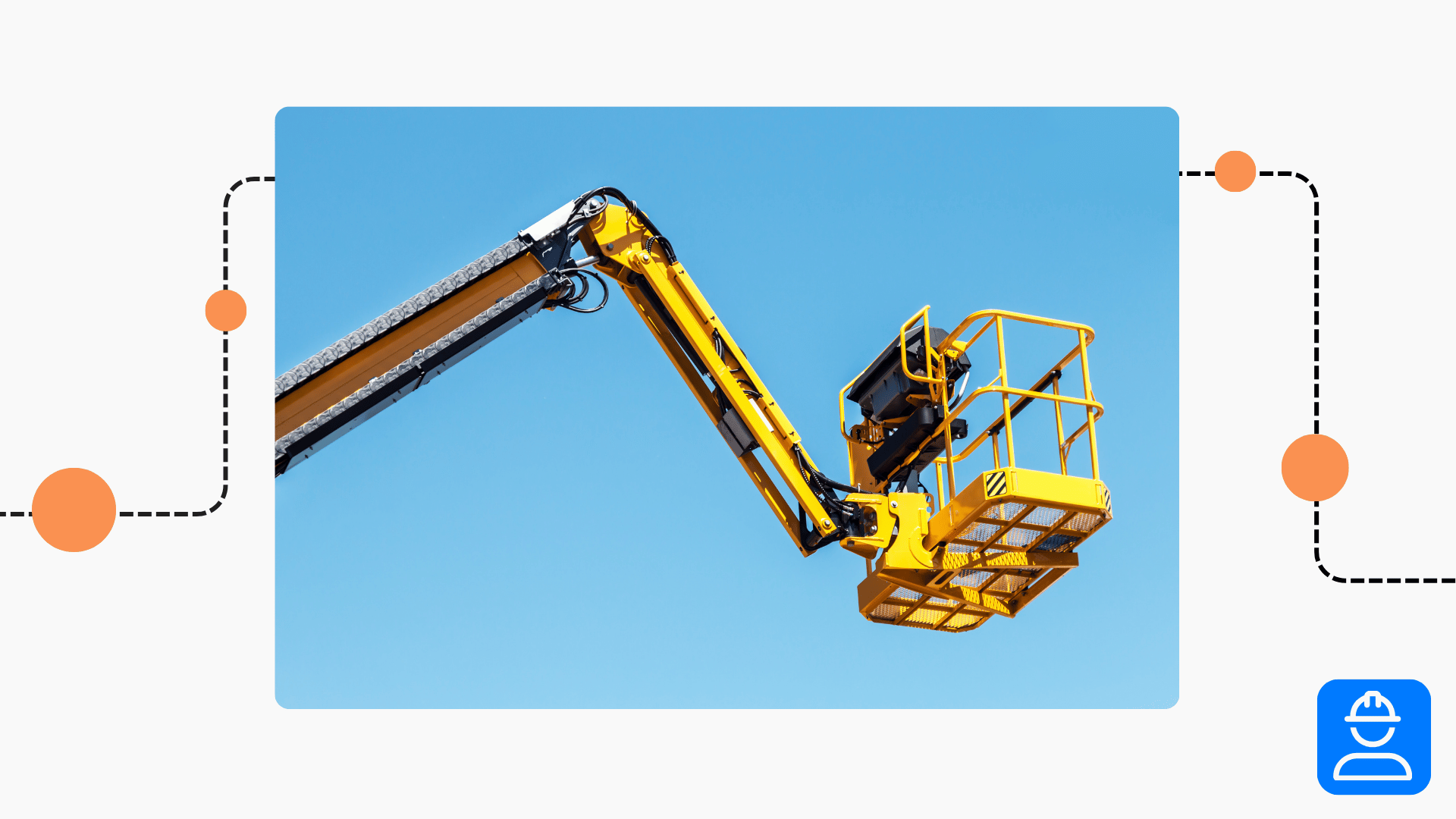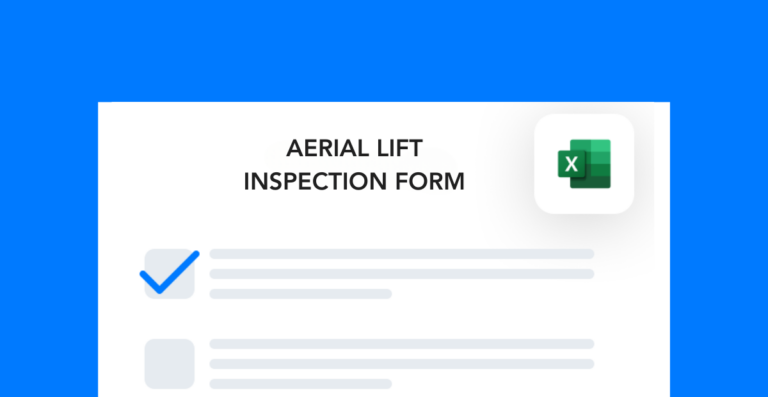There are many safety risks associated with working on hydraulic platforms. As an EHS professional, it’s your job to make sure your team knows the proper inspection checks and equipment protocols to follow. Use this aerial lift safety toolbox talk as refresher of the hazards and procedures your employees should know.
Aerial lift safety toolbox talk overview
This toolbox talk will go over:
- Aerial lift safety hazards
- Safe use guidelines
- Emergency procedures
Aerial lifts come with many safety hazards, so it’s critical that you make the necessary checks before each use. That, plus wearing the right personal protective equipment and using the lift properly are key to avoiding incidents.
Safety hazards on a lift
The most common safety hazards on aerial platforms are:
- Tip overs
- Electrocution risks when working near power lines
- Falls from heights
- Crush injuries
- Entanglement risks
Avoiding these hazards requires you to follow safe startup and use instructions per the manufacturer guidelines.
Safely operating aerial lifts
You should always wear and inspect the required PPE for the task you’re going to do. On aerial lifts, this often means fall harnesses, lanyards, high visibility clothing, helmets, and gloves (among other options). Look for signs of damage or excessive wear, making sure to report or red tag any shared gear that’s unfit for use.
Other important safety precautions to take include:
- Clear the platform of any clutter and debris.
- Keep guardrails up while in the air.
- Attach your fall protection harness to the anchor point.
- Don’t exceed the load capacity of the lift equipment.
- Only move the lift when the platform is lowered to the ground.
- Never try to operate a lift until you’re trained to do so.
- Use a spotter when you’re moving the lift in a crowded or low visibility area.
Before you ascend on the platform, test the controls and inspect the guardrails, hydraulic system, and tires for signs of damage. Double check that the lift is on a level surface and stable enough to use.
Aerial lift emergency procedures
You can prepare for emergency situations on aerial lifts by making sure you know where the emergency descent controls are on the dashboard. Practicing descents under non-emergency conditions is another great way to prepare yourself for an emergency scenario.
If a power failure does happen, the worst thing you can do is panic. Stay as calm as you can and use the manual descent controls to lower the platform. These are usually located near the base of the lift. You’ll also want to use phone or radio to let a coworker or manager know that you need help.
For injuries on an aerial lift, take basic first aid steps to stop the bleeding and minimize the immediate risks. Stay with the injured person until help arrives. If you’re the one who’s injured and you’re alone, do whatever you can to get assistance and stay calm.
Your goal should always be to operate the lift safely and prevent incidents. But it’s important to remember that incidents happen, and you should never assume that just because you’ve used a lift hundreds of times that you’re invincible and incapable of getting hurt.




